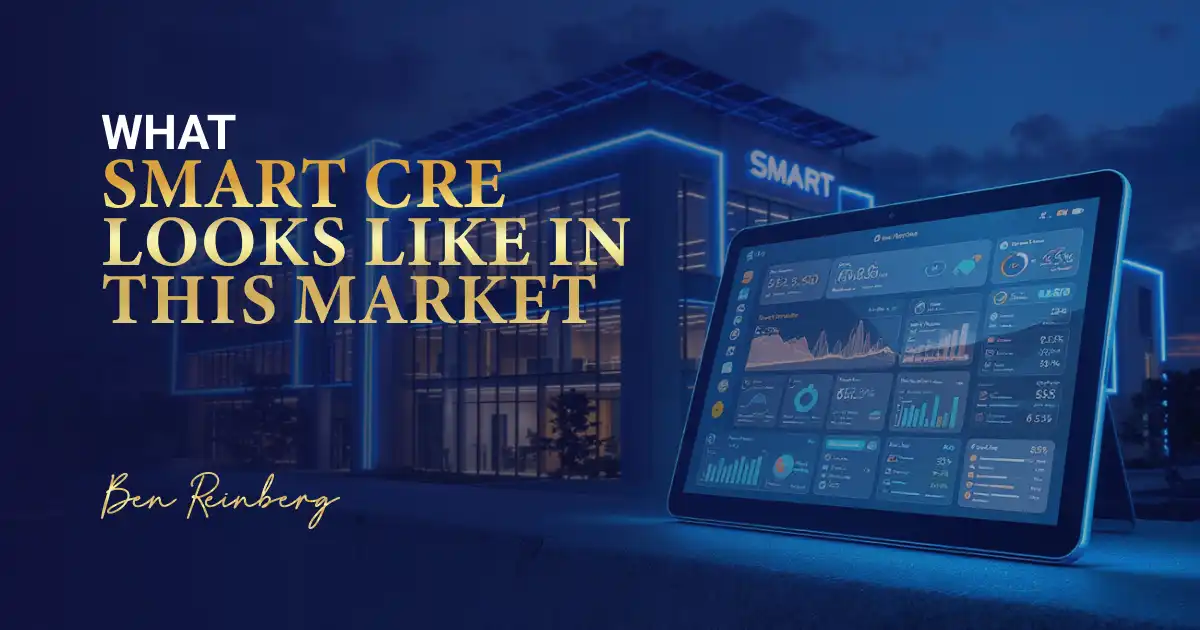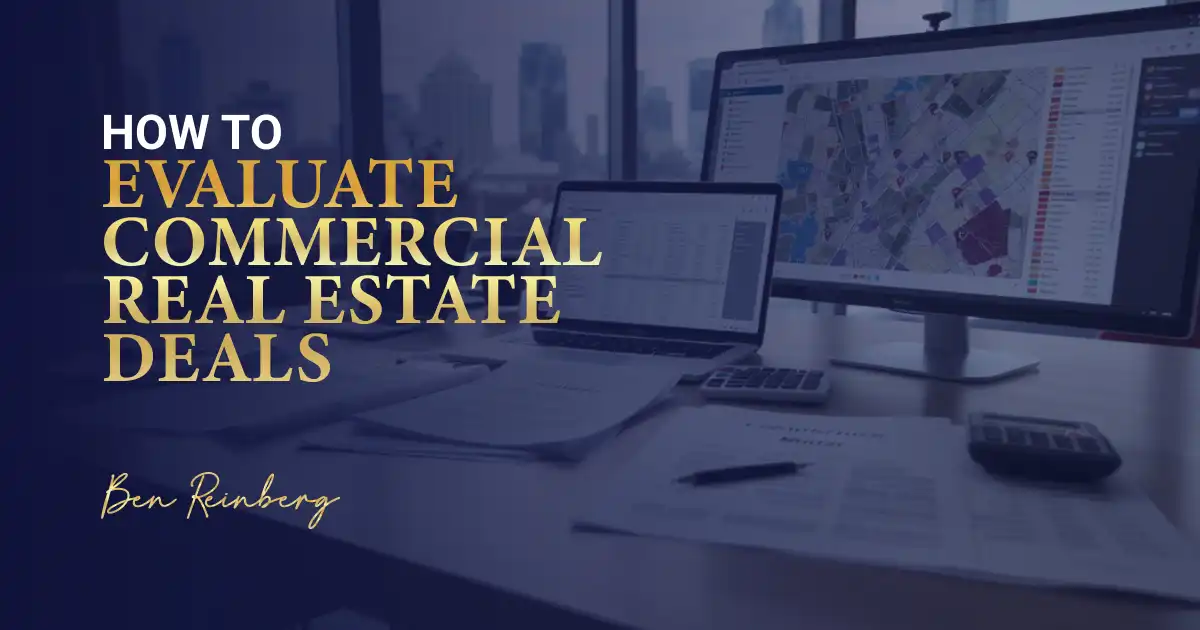
Why Real Estate is the Foundation of Wealth Creation
March 13, 2024
Discover the transformative power of a wealth mindset in real estate investment.
Read More >>>
With capital markets regaining stability and economic uncertainty driving tenants toward dependable, high-performing spaces, forward-thinking investors are shifting their focus from speculation to strategy. This is why commercial real estate is no longer about chasing short-term returns; it's about investing in resilience, backed by real demand and real data.
Here’s where we’re deploying capital in 2025 and how we’ve achieved a 28% historical internal rate of return (IRR) by focusing on sectors built for durability.
Whether you're a family office, private investor or institutional partner, the smartest capital today is flowing into asset classes that align with long-term demographic trends, operational efficiency and resilience in the face of recession. The question isn’t what’s trending. It’s what’s sustainable, durable and flexible.

I’ve seen it firsthand across market cycles: Not all returns are created equal. The strongest long-term, risk-adjusted performance often comes from stabilized medical office properties and Class B multifamily in second-tier Southeast metros. Why? Real fundamentals, including reliable tenant demand, sticky lease structures and favorable demographic shifts, anchor these assets.
A 7% cap rate on a tired Class C industrial property in a declining logistics corridor might look good on paper. Still, I’ve watched deals like that crumble under tenant instability and softening regional demand. On the other hand, a 5% yield on a well-located medical office building in Austin, Texas? That’s the kind of consistency I chase. Medical tenants renew, communities rely on them and volatility stays low.
I don’t chase cap rates, I chase risk-adjusted durability. The real edge isn’t in flash; it’s in fundamentals that hold up when the market doesn’t.
We actively hold medical office and Class B multifamily assets in our $500M+ portfolio. These aren’t theories; they’re the exact deals we’re in today. Co-invest with us in 2025.
I’ve watched the market evolve over decades, and the assets that perform consistently are tied to essential, durable demand.
Sectors like healthcare, outpatient care, veterinary services, cold storage and regional logistics hubs continue to lead the way. Aging population trends drive their strength, expand e-commerce infrastructure and decentralize care delivery. These aren't passing trends. They are structural shifts that support long-term tenant stability and consistent cash flow.
We pursue these asset classes not for surface-level appeal but because they hold up when others break down. They deliver the kind of risk-adjusted consistency that forms the backbone of resilient portfolios.
Every essential-industry asset we acquire is built to outperform in volatile markets. Partner with us in these proven sectors.
2025 Snapshot: Risk-Adjusted Returns by Sector
.webp)
Download the Hard Asset Empire Blueprint™
A proven framework for building long-term wealth through income-producing assets.
This guide distills decades of experience in commercial real estate into a practical, no-fluff playbook built for any market.
Tenants, such as regional hospital networks, last-mile delivery operators or dental group chains, often sign 10- to 15-year triple-net leases. That structure offloads operational costs and protects your bottom line during periods of volatility.
Whether it’s converting a retail strip in a Florida commuter suburb into medical-use bays or adding EV-charging infrastructure to an industrial property outside Atlanta, adaptability builds long-term margin and value.
Properties with Leadership in Energy and Environmental Design (LEED) certifications, solar integration or Americans with Disabilities Act (ADA)-compliant access are more attractive to tenants, buyers and lenders. This is no longer optional in states like California, New York and parts of the Midwest.

Is the city’s population trending upward? Are employers expanding or leaving? In metros like Raleigh, North Carolina; Tampa, Florida; or Indianapolis, Indiana, job growth and migration trends are driving stable tenant bases and upward pressure on rents.
Is it triple-net (NNN) with built-in annual escalators? Are there termination clauses? A five-year lease with a credit-rated tenant and renewal options is worth more than a flashy space leased on a month-to-month basis.
Deferred maintenance on a 1980s multifamily building in a flood zone will erode margins fast, no matter how "cheap" the asset seems. Instead, look for well-located assets with good bones and documented upgrades.
Can you buy two more like it? Does this investment create operating efficiencies? If your goal is to grow a medical commercial (CRE) portfolio in the Midwest, buying a standalone office in Southern California may not serve your long-term vision.
Many municipalities now offer tax credits for green retrofits or penalize energy-inefficient assets. Properties that align with local compliance laws and tenant expectations today will trade better tomorrow.
Savvy investors in 2025 aren’t guessing they’re reading the map. They evaluate properties through the lens of durability, tenant quality, market viability, and operational flexibility. It’s not just about how much the property earns today; it’s about how resilient that income will be when the cycle turns.

If you're looking to build a portfolio with dependable, long-range returns, medical office buildings (MOBs) deserve a serious look. In a market where so much feels unpredictable, this asset class offers something rare: consistency.
As healthcare systems continue to shift toward outpatient care, driven by both patient demand and cost efficiency, these properties remain in strong demand. Tenants are often established providers with solid credit, and they tend to sign long-term NNN leases, which significantly reduce your day-to-day responsibilities as an owner.
The numbers back this up: top U.S. metros have reported occupancy rates of 92% or higher, even during periods of economic stress (Revista, 2024). That kind of resilience matters not just for peace of mind, but for maintaining steady, uncorrelated income when other sectors wobble.
Beyond the financials, MOBs also align with broader ESG goals, namely, increasing access to essential healthcare in communities that need it most. That makes this not just a wise investment, but one that carries long-term purpose.
If your investment strategy prioritizes stability, low volatility, and a long-term perspective, MOBs provide a reliable foundation that mitigates the noise of more speculative plays.
If you’re aiming to anchor your portfolio with performance and resilience, industrial real estate continues to be one of the most consistent sectors in 2025.
E-commerce isn't slowing down, and neither is the demand for the infrastructure that supports it. From last-mile logistics hubs to cold storage facilities and fulfillment centers, the need for efficient, modern industrial space continues to grow. Vacancy rates in key markets, such as Phoenix, Dallas, and the Inland Empire, remain under 4%, providing clear evidence of a tight supply and sustained demand.
What makes this sector particularly appealing for long-term investors is its operational simplicity. Leases often span seven to 10 years, typically with national or global tenants and involve fewer maintenance issues compared to other asset types. If you're looking for predictable cash flow, tenant stability, and an opportunity to scale, industrial properties offer a strong foundation without the hands-on burden.
It’s not just about trend-chasing; it’s about positioning yourself where macroeconomic momentum is already moving.
Sometimes the best opportunities are in the spaces no one’s crowding into yet. That’s what makes niche healthcare assets so compelling.
Veterinary clinics, dental offices, and behavioral health centers serve needs that don't disappear when the economy slows. These businesses tend to be recession-resistant and typically operate from smaller, more manageable spaces. Their tenants often stay for the long haul because moving a practice is costly and disruptive.
As an investor, this means you're stepping into an asset class that offers high tenant retention, low volatility, and very real demand, especially as pet ownership rises and localized, outpatient care becomes more prevalent.
If you're a private investor or part of a family office looking to enter a high-demand, low-competition sector, this is an area worth your attention. It’s accessible, fundamentally strong, and built for durable returns.
The future of retail isn’t in massive malls, it's in neighborhood-based service centers that people rely on.
Flex retail properties such as strip centers anchored by fitness studios, dry cleaners, dental clinics or urgent care are seeing renewed momentum. These are the places people visit every week, not just once a season. That frequency translates directly to tenant stability and consistent cash flow.
As suburban areas grow and commuting patterns change, consumer demand is shifting toward hyper-local convenience. Investors who spot this shift early are finding opportunities to reposition these assets creatively, sometimes blending medical, retail, and even light office uses into one cohesive community hub.
These aren’t glamour plays. But they are practical, grounded investments that often outperform during economic uncertainty. That’s what matters when you're thinking in decades, not quarters.
If your strategy includes both financial durability and social relevance, workforce multifamily housing deserves a place in your portfolio.
Class B and C apartment complexes in secondary markets, such as the Southeast, Midwest and Florida Panhandle, continue to draw strong demand. These regions offer a balance of affordability, job growth and livability, making them ideal for working-class tenants who are priced out of central metropolitan cores.
The upside here isn’t just in occupancy, it’s in innovative renovations that improve tenant experience and increase rents responsibly. Simple upgrades, such as energy-efficient systems, community spaces and security features, not only boost NOI but also help retain residents who are often seeking stability, rather than luxury.
Suppose you're looking to align your capital with resilient, high-performing commercial real estate. In that case, I invest in sectors that lead through every cycle: medical office, industrial, multifamily, retail and veterinary properties.
I’ve built a $500M+ portfolio and closed billions in transactions by investing where others hesitate and achieved a 28% historical IRR doing it.
These aren't guesses. They’re disciplined, data-backed decisions made with experience, insight and relentless execution.
If you’re ready to invest in what’s sustainable, not just what’s popular, connect with me and let’s build a portfolio designed to last.
To start investing in commercial real estate, begin by learning how commercial property investing works, including lease structures, cash flow models and market cycles. New investors often start by researching commercial real estate syndications, real estate investment trusts (REITs) or partnering with experienced operators to access recession-resilient asset classes, such as medical office buildings, industrial warehouses or multifamily housing.
You can invest in commercial real estate with relatively little money by joining real estate crowdfunding platforms, purchasing publicly traded REITs or investing passively in commercial real estate syndications that have low minimum investment requirements. These options provide access to high-performing properties, such as industrial or medical real estate, without requiring millions in capital.
A good commercial real estate investment delivers predictable cash flow, features long-term leases with creditworthy tenants, and is located in a market with strong job growth and tenant demand. Sectors such as medical offices, logistics warehouses, and multifamily properties for the workforce tend to offer low vacancy rates and high stability, even during economic downturns.
Commercial real estate is owned by a wide range of investors, including individual investors, accredited investors, family offices, and institutional investors. More recently, everyday investors have gained access through syndications, REITs, and crowdfunded commercial real estate platforms, allowing broader participation in income-producing assets.
